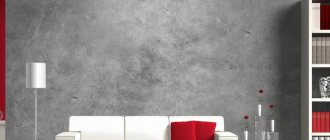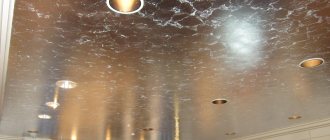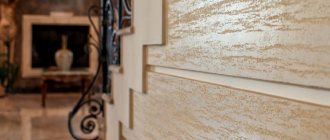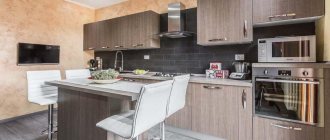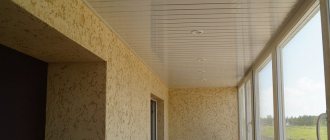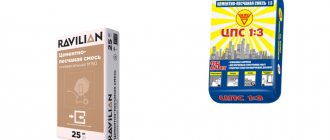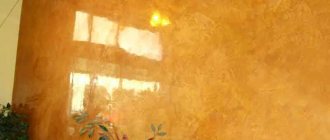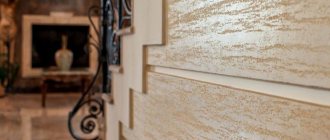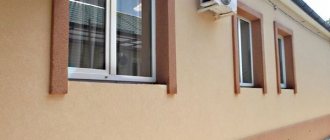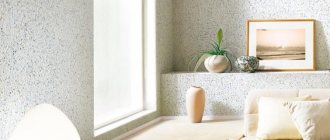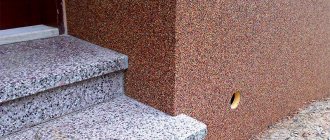Home » Decor » Wall decoration
Wall decoration
Alyona
66605 Views
Decorative plaster can radically transform a home. Moreover, it can be combined with other types of cladding, painted in different colors, and any structures can be used.
Varieties by composition
Floral patterns, ceiling stucco, antique stonework, Venetian, large waves - all this and much more can be created from textured plaster.
Decorative plaster can radically transform a home
The material goes on sale not only in white, but also in any other color, in dissolved form or in the form of dry mixtures. Each type has its own composition, preservatives, and fillers. The appearance of surfaces depends on them.
The structural nature of the coating makes it possible to create different patterns and effects. It doesn’t matter whether it’s a ceiling or a wall, a bathroom or a kitchen, a living room or a bedroom, a nursery or a hallway. Color or combinations thereof, texture or pattern are the exclusive prerogative of the master who works with the mixture. The main thing is that everything is combined with the style, and does not look pretentious and provocative. Based on their composition, the following types of textured plaster are distinguished:
Mineral
Mineral - most often used in the kitchen and bathroom
It is based on cement and is sold in powder form. Endowed with excellent resistance to moisture, suitable for any surface. Can be used in the kitchen and bathroom.
Silicone
Silicone - easy to lay on any surface
This is a ready-to-use mixture and does not need to be diluted. fits well and easily on absolutely any surface, be it wallpaper under plaster, old uneven walls or brick. It has good moisture resistance, suitable for corridors, halls, bathrooms or kitchens. It can be used even on unprepared surfaces.
Acrylic
Acrylic - has good coverage
Liquid material, can be used immediately after opening the package anywhere. It has uniquely good covering ability and high decorative properties. Recommended for decorating living rooms, bedrooms, and children's rooms. The advantage of this material is a wide range of colors. Polymer plaster is similar to this type.
Silicate
Silicate – contains liquid glass
Also available in ready-to-use form. Contains liquid glass. Has excellent adhesive properties. It fits well and masks unevenness. Can serve as a basis for structural types of plaster.
Preliminary surface preparation
The base for decorative plaster must be strong and even. The old finish must be removed. If the leveling plaster is in good condition, it does not need to be removed; it is enough to make notches to improve adhesion. If there are voids or damaged areas, the coating must be replaced. After drying the cement mixture, it is primed.
You need to start applying decorative plaster to the wall after a few days, when the mixture has dried to its full depth. Otherwise, cracks will appear, which will also appear in the final finish.
Textured varieties
Any type of decorative plaster can be used to create a smooth surface or act as a material for creativity. They are used to make relief compositions and patterns, from simple to the most complex, including panels for decoration.
Graphito
Graphite – contains sand (sand concrete)
Thin-layer concrete containing sand (sand concrete). It can be used to create wood coverings, porcelain stoneware, leather, decorative stone and fabric. It is also used to create volumetric or floral motifs. Even monumental images can be recreated from it . The material is very good for decorating walls in the medieval style.
Flock
Flock - very popular plaster
Decorative finishing designed to recreate a soft structure similar to natural fabric. Very popular. It is used to decorate children's rooms, bedrooms and other rooms where a warm atmosphere and comfort is considered a priority. The mixture consists of multi-colored acrylic flakes. This is the main feature of flock plaster. With it, you can alternate areas of different colors with each other. In this case, no joints are formed, the coating looks solid. This feature of flock plaster allows you to decorate, for example, children’s rooms in different colors easily and naturally.
Venetian
It is considered the queen among other types of plaster. Most designers use it in their projects. It is used to imitate translucent marble tiles, rocks and other textures. The composition of this mixture has a unique visual depth. It is suitable for any premises:
- children's;
- living rooms;
- hallways;
- kitchens
It can be combined with your favorite other materials and finishes.
Marble slab covering is a unique solution, especially in areas with curvature. This type of finishing is called classic because our ancestors and others used marble chips and lime. They were often used in the Middle Ages.
Advice If you cover the Venetian with a wax coating on top, then this lining will last at least 10 years, or even longer.
Stone chips
Stone chips are a cladding method that also deserves attention
I believe that this method of cladding also deserves attention. Stone chips from fine to medium fraction (0.5-5 mm) in a special binder can work wonders. The manufacturer can use marble, granite or quartz as the base (stones). This coating can be stylishly finished:
- arched openings;
- corners;
- niches;
- architectural elements.
The clear, cold appearance of the coating in combination with another type looks simply gorgeous.
Bark beetle
A pleasant atmosphere will always reign in a room covered with bark beetle.
Despite the fact that bark beetle is used mainly for finishing facades, it can also be found among passers-by in some apartments. In a room covered with bark beetles, a pleasant atmosphere will always reign, conducive to relaxation and tranquility. The coating is endowed with high strength indicators, lasts a long time, and does not lose its original appearance throughout its entire service life. practicality, durability. I can say that those who use it are chasing two birds with one stone and successfully catching up with both.
Africa
Africa looks quite expensive
Covering imitating snake or crocodile skin. Possessing a special decorative effect, it is often used in interior decoration, emphasizing the ethnic flavor. It looks quite expensive. The top is covered with glitter, paint or wax.
Marseille wax
Option with Marseille wax
Used by designers to create a rocky, antique masonry or sandstone look. The color scheme is light sand. Such elements complete the interior, adding coziness and warmth to the room. It is usually used to decorate doorways or certain sections of walls.
Silk effect
An amazingly beautiful type of plaster, reminiscent of silk with unobtrusive designs and patterns. They look chic in the interior and give a rich tactile sensation to the touch.
Silk plaster is considered the queen in the decorative plasters sector. It always looks expensive, chic, aristocratic, no matter where it is used. A special charm is the shimmer of rays in daylight, from which it is difficult to take your eyes off.
Decorative plaster differs from traditional plaster in that it contains substances that give the coating uneven, decorative shapes and textures. Manufacturers use as a basis:
- quartz;
- foil;
- mica;
- silk fibers.
They are the ones who recreate beautiful patterns on wall surfaces. Both will add dynamism to the interior. Will radically change the appearance. Will make the room truly stylish.
Application options
Two ways to use decorative material.
Walls
With the help of such wall decoration, you can give the room special originality and uniqueness, as well as bring any design ideas to life.
Ceiling
This material has excellent plasticity, so with its help you can not only effectively decorate the ceiling or create various reliefs on it, but also hide cracks and minor irregularities in the ceiling plane.
The photo shows a classic bedroom with a ceiling decorated with sand-colored plaster.
Thanks to the ability to create any shape and color on the ceiling, such a coating will look beautiful and harmonious in any interior.
Finishing of stoves and fireplaces
Decorative plaster for decorating stoves or fireplaces must first of all be resistant to high temperatures, heating, rapid cooling and have protective properties.
Kitchen apron
Exceptionally durable, heat-resistant and odor-resistant plaster is a rational option for decorating a kitchen backsplash and creating a stylish and individual design.
Arch
With the help of this magnificent decorative material, which has countless options and is suitable for almost any style direction, it is possible to creatively approach the design of such an architectural element as an arch and turn it into a truly unique interior masterpiece.
Color of personal choice and style
Accentuation is the most famous and most important design technique that always plays a win-win game. Especially then, the task is not only to refresh the room, but also to make it stylish, fashionable, and add a touch of sophistication and wealth. The choice of colors here comes second to the choice of material. Color is the mood, emotions and impressions that a person receives from the renovation.
The choice of color affects mood, emotions and impressions
It should be in harmony with the style, not irritate, not tire. The fundamental choice of color palette is based on four groups:
- Fresh. They give transparency, purity and spirituality.
- Warm. They calm loved ones, and add coziness to the room, making them ready to relax.
- Saturated. They have a high percentage of coloring matter.
- Calm. Soft colors, most often with shades of gray. This decision brings balance and peace to the home.
The color should be in harmony with the style, not irritate, not tire
How and what kind of plaster can be used in kitchens?
By making a revolution in the kitchen and bathroom, refusing to glue wallpaper for painting and ceramic tiles, you will make them super fashionable, stylish and unique. This room is considered to have an extreme climate in the house, so for the kitchen it is advisable to choose acrylic-based synthetic compositions. Only they are able to withstand temperature changes, are resistant to the formation of fungal formations, and allow air to pass through well.
Advice It is advisable to cover the top layer with wax or paint, this way it will last longer without losing its appearance and will simplify the care of the coating.
In the interior of the kitchen
Look at the photo to see how your kitchen or bath can be transformed if you choose decorative plaster as a finish. And it doesn’t matter what it will be:
- Venetian silk;
- bark beetle;
- velvet, classic travertino;
- marble;
- microcement.
Gypsum mixtures cannot be used as a base for these rooms. They are afraid of high humidity and do not meet hygienic requirements. Because they actively absorb moisture, they swell, losing their integrity. In order not to have to redo the repairs, and in the near future, you simply need to abandon them.
Venetian decorative plaster is especially popular in kitchen decoration.
It is used to create styles such as:
- Mauritanian;
- high tech;
- country;
- vintage;
- retro.
Here they use discreet smooth textures.
- The Venetian looks good in combination with an exquisite panel and a white set. The coating can be applied to all four walls or to individually selected sections.
- An option where the ceiling surface in the kitchen will not be flat, but textured, and the walls will be smooth, one-color or two colors, will look creative. Here the color of the headset is selected according to personal preferences. You can even recreate imitation clouds or painting motifs on the ceilings.
- It would be interesting to look at the option where such a coating separates the working area from the dining area.
- The combination of a decorative brick-like coating with a smooth surface also looks original. Such a kitchen will look impressive and stylish.
- The photo shows what a combination of artificial stone and bark beetle looks like in a small kitchen. You can choose any colors, not just those used for the example.
- Concrete plaster is often used in kitchens. It looks quite decent and original. In the apron area, you can use transparent or mirror wall panels. They will not spoil the overall appearance and will serve as reliable protection for the coating.
- You can leave the same color as concrete. True, strokes of different shades will look even better on deep gray, for example, black, white or strokes of whitish hairs, with shades of rust or a metallic sheen.
There are a lot of options for using textured coatings. They can be used to decorate only arches, niches, ledges or all walls along with these architectural elements. You can make them plain or combine colors.
Little tricks in kitchen design
I hope these tips will help you in decorating your kitchen space:
- If the kitchen has niches, ventilation ducts, or openings, decorate them with patterned plaster.
- If you have a fireplace or stove in your house, cover them with brick or natural stone plaster; in addition to an aesthetic and fashionable appearance, you will achieve another effect - under such a coating the chips and cracks on them will be hidden.
- If you want to make a kitchen in a maximalist style, use a smooth wall covering.
- If your kitchen is light and spacious, and the furniture set is exclusive, use Venetian plaster in your work.
There are many options for using coatings
The apron is especially susceptible to temperature changes, so it can be covered with ceramic tiles. Cover the dining area with decorative plaster as much as possible, this will add comfort.
Acrylic-based compositions
All acrylic types of plaster include a number of natural and synthetic polymers in their basic composition. The presence of polymer resins gives the coating proper elasticity, resistance to shrinkage and the formation of cracks in the finished coating.
Note!
Laying quartz vinyl tiles with your own hands step by step: instructions, subtleties, methods, features, installation, “Click-Drop”
Suspended ceiling Armstrong (125 photos): device, plate sizes, types, installation, calculation and installation
Textured paint for walls: types, how to apply it yourself, instructions, composition, varieties, photos of new designs
Another advantage is the huge variety of colors of decorative plaster, obtained by adding coloring pigments.
However, when purchasing acrylic materials, you should be aware of the high risk of fire of the composition.
Use in the hallway
The corridor, hallway, and hall are considered, if not the main ones, then at least important in the house. They are called a showcase that introduces guests to the apartment, style tastes and preferences of the owners. Therefore, it must be formalized with dignity and correctly. This is how guests form their first impression.
Use of material in the hallway
- Smooth, patterned surfaces that subtly cover the walls are best for a small hallway.
- To visually enlarge the space, it is better to take as a basis decorative plaster of light colors with a smooth or finely granulated texture and a discreet design or pattern in the center.
- Any relief visually creates volume, so a small area of the room will be hidden.
- In combination with the Venetian, you can use gold-colored stucco, however, if this does not contradict the style of the project.
- For large hallways and halls, I recommend choosing Venetian. This way your space will sparkle in a new way, it will look not like an ordinary room, but like a real palace or a main entrance.
- Plaster that imitates brickwork or decorative stone looks gorgeous in the corridors.
- For interiors in the pop art style, three-dimensional drawings made in bright colors are best suited.
- Picturesque paintings, against the backdrop of decorative plaster, will complement the image and add elegance to the classic style.
- The delicate colors of textured plaster walls are the best way to enliven a Provencal-style hallway.
- The Venetian with the effect of wet silk looks gorgeous in the interior of the corridor. It can be safely combined with glass, wood or metal.
Corridors and hallways are deprived of a source of natural light, so they need to use a light palette and bright colors. It would also be correct to use mirrors in them, especially if they have a small usable area.
Natural, muted tones will help create an atmosphere of peace and tranquility in living rooms and corridors.
Shades and design
Decorative plaster, as a rule, is produced in a snow-white shade, but you can also find colored types. Multi-colored plaster can only be purchased ready-made.
- If you couldn’t find the right shade, don’t be upset. In such a situation, tinting pastes and products will come to the rescue.
- A variety of additives are added to the material: both brightening and darkening. It is allowed to combine a couple, and even more different shades. It is in this way that various panels and frescoes on the walls are created.
- To give the wall an antique effect, you should apply a patina to it. Patination is a frequently used technique and can be produced in both classic colors (golden, silver, emerald) and the most common ones (red, yellow, blue and others like that).
- Such decoration makes the room more interesting and luxurious if the combinations of shades are in harmony with each other.
Using a wide variety of tools, people decorate walls with various designs: Flowers, stripes, circles and other patterns. The device does not have to be specialized.
Often improvised tools are used, for example: Plastic bags, dish sponges, gloves and much more.
Ways to decorate living rooms
Here, when planning renovations, we set ourselves two main tasks - to create comfort and convenience, conducive to rest and relaxation. Apparently, this is why the choice of finishing material for wall surfaces is a very important and difficult task.
- Decorative plaster in a living room design project may well serve as the main finish. It can also be combined with stone panels, wood, and paintable wallpaper.
- Here is a living room, where not only the wall surfaces are plastered, but also the ceiling, framed with stucco. No one can argue with the fact that it looks original and chic.
- If the goal is to visually increase the usable area, then you should use a mixture of light colors, even better with a good reflective effect.
- With Marseilles wax plaster you can create the following ornaments and imitation of wooden coverings, as well as imitation of brickwork and stone.
- To recreate an elegant, sophisticated living room interior, we choose Venetian plaster with a silver or golden sheen.
Velvet and silk walls reflecting particles of light flows look elegant and rich.
- Graphite is very often used by both designers and users. This type of plaster allows you to create the texture of aged walls or applications. The living room will also look good in certain areas.
- Africa is a widely known type of decorative plaster with a texture reminiscent of crocodile or snakeskin. It will look good and appropriate in an ethnic style living room. This finish looks expensive, especially if it is topped with a layer of glitter, varnish or wax.
- Rustic with the texture of shabby stone is used in the design of living rooms created in a country or historical style.
- Your living room will only benefit if you decorate the ceiling with patterns and combine walls with decorative plaster with areas covered with wallpaper for painting.
- You can artificially age walls using craquelure or bark beetle plaster. Cracks and abrasions are relevant in classic and retro styles.
The combination of several types of coverings in the living room does not make it pretentious and provocative if you correctly combine the colors and choose the texture.
I would like to note that traditional monotonous design projects, where the living room walls are made in gray tones, have long gone out of fashion.
Tip If you want your living room to look fashionable and beautiful, give preference to bright colors and new textures.
Mineral finishing compounds
The main component for such materials is cement. You can purchase plaster in the form of a dry mixture, from which the working mass is mixed immediately before applying the composition to the walls. The finished mass is painted only white, and therefore is more often used for classic interior styles.
You can diversify the decor of the room with the help of modern new products on the finishing materials market - this is cement plaster with stone chips. The presence of natural stone allows you to get a gray color for wall decoration with a beautiful glossy shine.
How can you decorate your bedroom beautifully?
Finishing the walls and ceilings of the bedroom is not only a way to extend the “life” of the coating as long as possible - it is a way to create a comfortable environment in it, conducive to relaxation before bed. Most often, flock plaster in dark or muted tones is used in such rooms.
Finishing bedroom walls and ceilings
- To create a volumetric effect, it is better to choose a material with medium or large fractions.
- Venetian is the ideal covering for a classic-style bedroom. With its help you can recreate the natural structure and appearance of natural stone. The naturalness of the color and the smoothness of the lines help to calm down and inspire serenity.
- The easiest way to get a trendy concrete wall surface is to use a ready-made concrete surface. White concrete walls are an interesting solution, but not everyone has this ready-made concrete wall. You can create a similar effect yourself if you use special plaster. It is no different from traditional concrete with all its characteristic structural effects. Such a coating can have any texture, be satin, matte, uniform, or imitate formwork.
In the bedroom interior
Venetian marble slab in rich bright green color is a bold decision.
- A win-win option, in my opinion, is a coating that imitates fabric. It can be velvet, wet silk, aged velvet or velor. The texture can be either matte or glossy. As for colors, the choice is up to the owners.
- The pistachio-colored bedroom looks original.
- A win-win option, and this has been verified, is the use of decorative plaster in natural shades.
- With Mann coating, walls can be made smooth or look like decorative stone. The roughness of the coating here is given by marble chips.
- Light shades of the coating can be complemented by shimmer by adding pearlescent pigment.
- With wet silk plaster you can create elegant design projects. It will give the walls a smooth and velvety feel.
- If you cover the walls with latex paint, then iridescent stains of a rich color palette will form on their surface. This bedroom will look even more beautiful.
Ideal cover for a classic style bedroom
- With Marseilles wax you can decorate the walls to resemble the bark of wood, stones or bricks, if you are satisfied with this design. And by covering the walls on top with wax, you can get a glossy look.
- An accent area in the bedroom is a common and quite fashionable solution. It is not at all necessary to use the same texture. For emphasis, choose the wall at the head of the bed. This changes the room radically.
Types of decorative coatings
Modern types of textures are classified according to the main texture-forming characteristic - the size of the granules. Today there are several types of coatings:
- with calibrated marble granules (marble chips);
- with granules of mixed grain size;
- with fine-grained uncalibrated granules;
- with fine mineral filler.
The consistency of the above types can be changed, as well as the finishing technology. The creation of a textured coating is influenced by such factors as: type of tool, intermediate time between applying layers, application technique.
Tips for beginners
If you decide to plaster the walls yourself with textured mixtures, I suggest you listen to the advice of professionals:
If you do not have experience working with this material, choose simple types of plaster; you can apply relief designs using stencil rollers. They can be bought at any construction market.
Unusual living room design in purple
- In plaster bark beetles, use special granules in your work. Move them in the desired direction with spatulas.
- To create bas-reliefs, stucco moldings, and three-dimensional decorative figures, use gypsum compositions, provided that you can do this. Otherwise, you can buy ready-made ones. There are plenty of them in hardware stores too.
- If up to this point you have no experience and have never worked with decorative plaster, try your strengths and capabilities on an inconspicuous section of the wall of a balcony, loggia or toilet.
In dark, neutral colors
Consider the features of your walls. Textured plaster fits well and without problems on surfaces made of brick or concrete without prior preparation.
- Consider the climate conditions of the room. For example, you can buy any type of covering for the living room, corridor or bedroom. And in the bathroom or kitchen, where the climatic conditions are unstable, pay attention to silicate mixtures. By the way, they can be periodically updated and repainted.
- When choosing colors in your bedroom, consider the space. If it is located in the north, use coffee shades, beige, orange, burgundy or pink. If it is sunny, then it is preferable to use cold colors: green, gray, blue.
Cozy corner for relaxation
Pros and cons of interior decoration
Several advantages and disadvantages of this finish.
| pros | Minuses |
| It has an aesthetically attractive appearance and high performance characteristics. | Does not tolerate serious mechanical stress. |
| Goes well with other finishing materials. | |
| Resistant to temperature changes, sunlight and other negative factors. | It has a fairly high price. |
| Perfectly hides unevenness and defects present on the surface. | Some types of coating are not easy to maintain. |
| Has a long service life. | |
| Eco-friendly and vapor permeable. | Decoration requires a large consumption of this material. |
| It has many colors and textures and a huge variety of application methods. |
What is better wallpaper or decorative plaster?
If we talk about expensive wallpaper (based on natural materials), then it is not much different. In terms of practicality, plaster is more reliable. When working with wallpaper, you need to adhere to and observe certain rules and nuances; plastering is much easier. This saves time, effort, and money. Preparing the wall surface is the same for both wallpaper and plastering. True, for the second option no special alignment of the walls is required.
Light and unobtrusive colors are suitable for the bedroom
Cost of application work per sq.m.
Our salon presents samples of decorative plaster of hundreds of textures and shades, including in large formats - so you can easily choose your decor option. But buying plaster for walls is only half the battle; it is important to apply it efficiently and artistically. The application work consists of several stages - preparation of the base, application of the base, finishing and protective layers. This process can take up to a week or more (depending on the area of the room), since the quality of the final decorative coating directly depends on the drying time between layers.
The price for applying decorative plaster per m2 is indicated on the page of each design effect to the right of the texture image. It depends on the degree of readiness of your walls, the chosen application technique and the type of materials used (for example, the composition of the binders - natural or acrylic).
Some types of textures require particularly careful alignment of the walls and more layers to be applied - in this case, the final price per m2 will be higher. In general, the price range for application work is from 700 to 1,600 rubles. per sq. meter. An accurate estimate can be made after inspecting the walls at the site.
